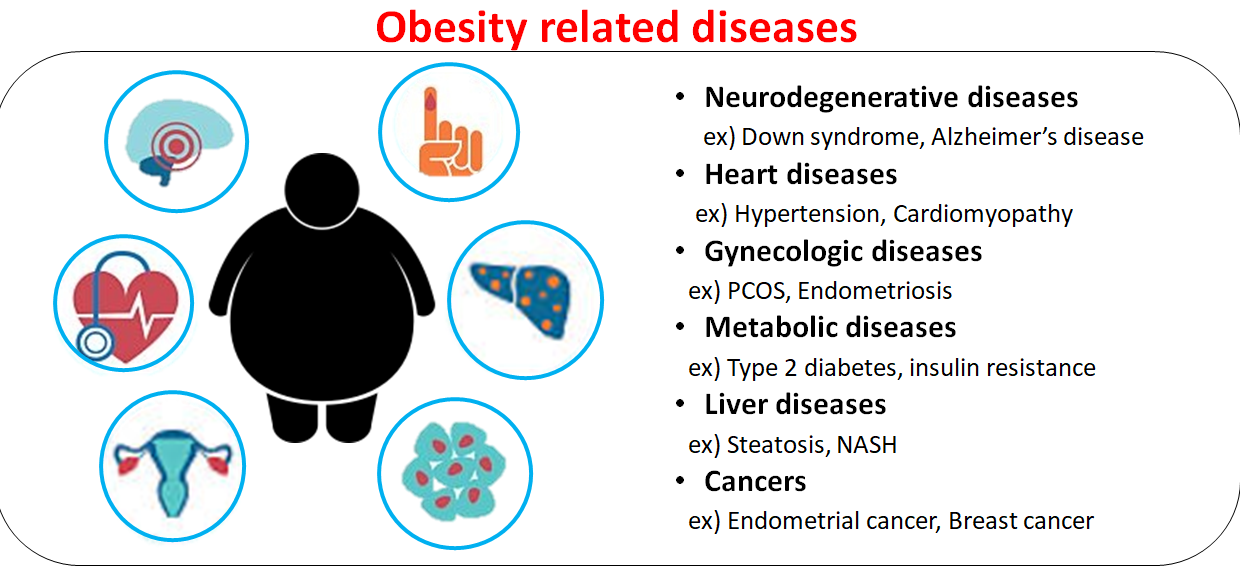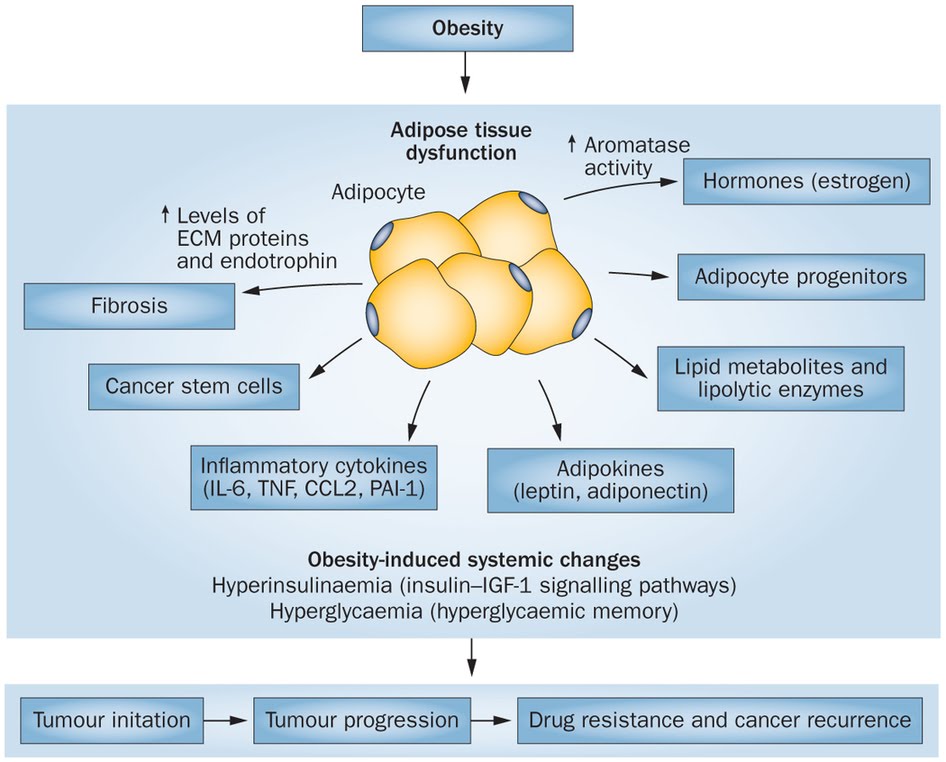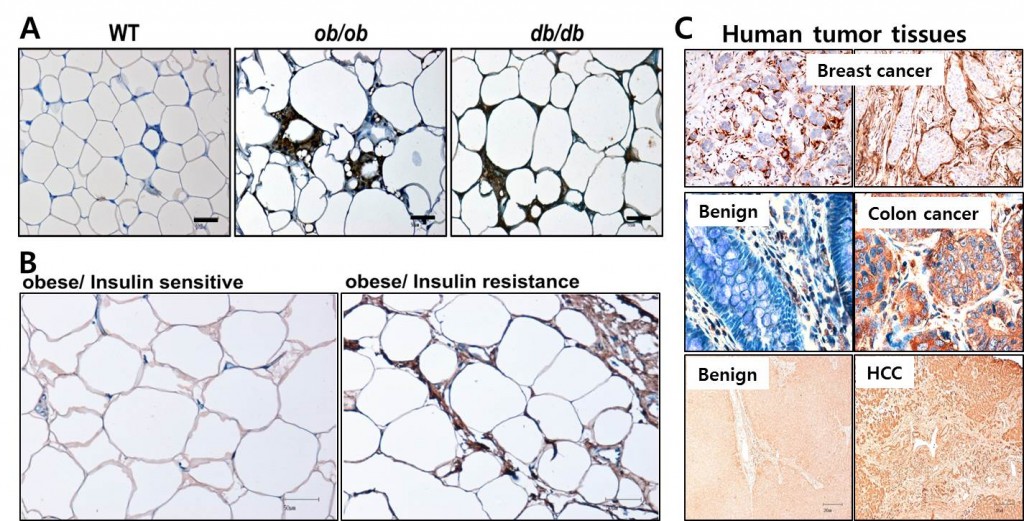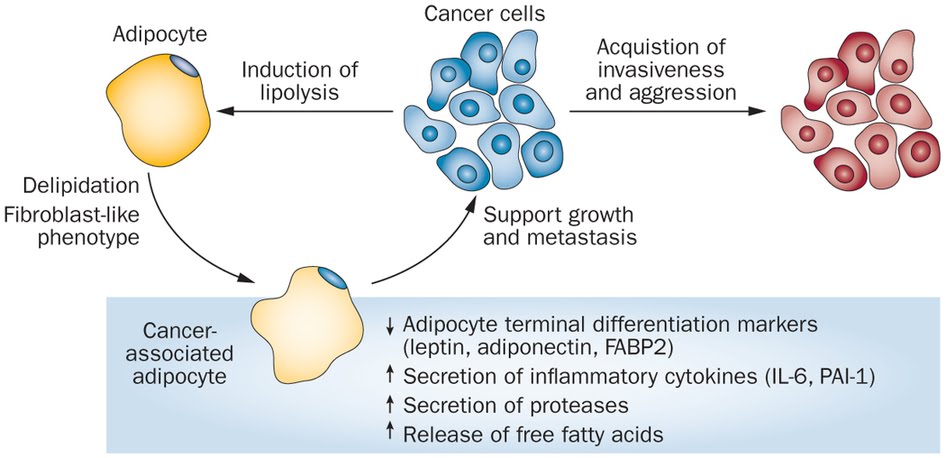Adipocyte Biology

복부 지방축적으로 인한 다양한 대사성질환의 발병원인을 분자수준에서 규명하고, 대사성질환 치료제 개발연구를 수행함.
Communication between Adipocytes and Cancer Cells.

Obesity induced dysfunction of adipose tissue contibutes to cancer cell progression. (Nature Reviews (2014) Park, Jiyoung., et.al.)
비만은 다양한 암의 발생과 진행에 위험인자로 잘 알려져 있음. 비만과 연관성이 높은 종양을 대상으로 비만 지방조직에서 유래하는 다양한 치료표적을 발굴하고 분자기전을 밝히는 연구를 수행함.
-
The growing field of obesity in cancer biology over the last several years encompasses certain types of tumours, covering renal, oesophagus, gastrointestinal track and reproductive organs in both men and women. The increase in the risk of cancers in the obese population has focused more attention on the underling mechanisms rationalizing the connection of obesity and cancer aetiology.
-
This ranges from initiation to progression, and eventually to the drug development tailored to obese cancer patients. However, the mechanistic association between obesity and cancer still remain elusive.
-
Prof. Jiyoung Park’s laboratory endeavors multiple, interdisiplinary approaches ranging from molecular biology, biochemistry, and animal pathophysiology studies to uncover the molecular mechanisms how cancer cells communicate with tumor-stromal adipocytes.
Novel Adipokine, Endotrophin plays a role in tumor progression.

Whole body tumor burden monitored by IVIS scanner.
Adipose tissue derived endotrophin, cleavage product of Type VI collagen A3 augments mammary tumor growth and pulmonary metastasis in vivo. A. MMTV-PyMT mice (12-weeks), B. MMTV-PyMT mice crossed with MMTV-Endotrophin (12-weeks), C. Lung metastasis (PyMT vs. PyMT/ETP).
Immunostaining for endotrophin in either adipose tissues or tumor tissues.
A. Endotrophin levels are increased in obese and diabetic adipose tissues compared to lean control mice.
B. Visceral adipose tissues from insulin resistant obese human patient show higher levels of endotrophin compared to those in insulin sensitive obese adipose tissues.
C. Endotrophin levels are highly presneted in various tumor tissues including breast cancer, colon cancer and hepatocellular carcinoma.

Identify the Novel Factors derived from Cancer-Associated Adipocyte (CAA).



